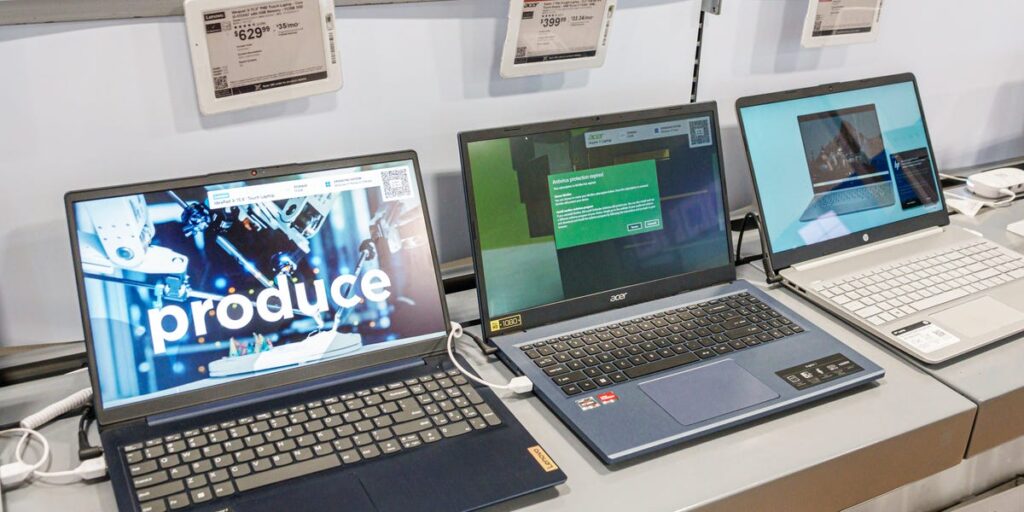- Americans’ favorite tech gadgets could surge in price under Donald Trump’s proposed tariffs, per a new report.
- The president-elect vowed to install tariffs of 10% on US imports and 60% on Chinese goods.
- An October report on consumer technology found laptops, smartphones, and TVs would surge in price.
Buying a new television now instead of next year could save you hundreds of dollars.
Under President-elect Donald Trump’s proposed tariff plans, consumers will likely see prices surge on big-ticket purchases, including several popular tech items and gadgets, according to a Consumer Technology Association October report.
Trump has vowed to install a blanket tariff of 10% to 20% on all imports and a flat, additional tariff of at least 60% on Chinese goods — a move many economists have warned will raise prices for American consumers and lead to inflation.
During his first term, Trump made good on many of his campaign economic promises, imposing a wave of tariffs in 2018 and 2019 on certain US imports from China, including steel, semiconductors, and EVs.
Economists cited in a Cato Institute report from earlier this year estimated that Trump’s first-term tariffs cost the average American household about $830 a year.
Trump has said his proposed tariffs would not increase prices for US consumers. But the former president’s tariff plans would impact more than just a few key items this time: The consumer technology sector would be hit especially hard, and prices would rise on some of the most common tech items bought by US shoppers, the CTA report found.
The pre-election report used Trade Partnership Worldwide, LLC research to examine how Trump’s tariffs would affect 10 consumer technology products found in nearly every American home, including non-automobile lithium-ion batteries commonly used in portable electronics, TVs, computer accessories, connected devices, headphones, monitors, PCs, laptops and tablets, video games, and smartphones.
The report found that tariff effects on those products alone would shrink US consumers’ spending power in the sector by $90 billion, assuming no countries or products are excluded from the blanket tariff ring.
Products for which China is the major supplier would see the most dramatic price increases. China’s economy is a more vulnerable state than it was when Trump previously implemented tariffs. The country is combating low wages and high unemployment among young people, leaving China’s household spending far below the global average, Reuters reported earlier this year.
In 2023, China accounted for 87% of US video game console imports, 78% of smartphone imports, and 79% of laptop and tablet imports, the Consumer Technology Association reported.
Under Trump’s tariffs, the average price of laptops and tablets could skyrocket 45%, jumping an additional $200-$350 from their current prices, the CTA report found.
Similarly, smartphones would see a more than 25% increase in consumer price, surging more than $200 from their average October price, the report said, which also drew on trade and tariff data from the World Integrated Trade Solution, the US Census Bureau, and the Global Trade Analysis Project.
Under Trump’s tariffs, video game consoles, meanwhile, could cost nearly $250 more than they currently do, and monitors could increase by more than $100, the report found. Televisions will see a 9% increase in consumer price, costing an additional $48 on average, according to the CTA report.
To combat rising prices, US consumers would likely slow their spending on such items, decreasing laptop purchases and tablets by 54% and smartphones by 44%, the report found.
Gary Shapiro, CEO of the Consumer Technology Association, and Vice President of International Trade Ed Brzytwa warned in the organization’s October report that the tariff’s impacts on consumer technology could extend beyond the sector.
“The proposed tariffs will not create more employment or manufacturing in the US,” the CTA executives wrote. “In fact, the opposite may happen where our productivity decreases and jobs may be lost over time when workers and businesses have less affordable access to technology.”
Read the full article here


